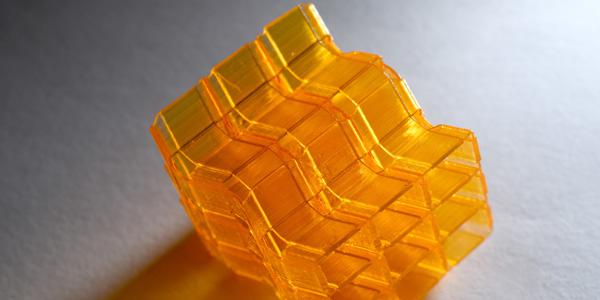Researchers Advance the Art of 3D Printing Origami
Researchers at the Georgia Institute of Technology have created a one-step approach to fabricating complex origami structures whose lightweight, expandability and strength could offer a wide range of benefits, including biomedical devices and equipment used in space exploration. Until now, making such structures has involved multiple steps, more than one material and assembly from smaller parts.
"What we have here is the proof of concept of an integrated system for manufacturing complex origami. It has tremendous potential applications," Glaucio H. Paulino, a professor at the School of Civil and Environmental Engineering at the Georgia Institute of Technology, says in a written statement. Paulino also serves as a leader in the growing field of origami engineering, or using the principles of origami, mathematics and geometry to make useful objects. Last fall Georgia Tech became the first university in the country to offer a course on origami engineering, which Paulino taught.
The researchers used a relatively new kind of 3D printing called digital light processing to create groundbreaking origami structures that are not only capable of holding significant weight but can also be folded and refolded repeatedly in an action similar to the slow push and pull of an accordion. When Paulino first reported these structures or "zippered tubes" in 2015, they were made of paper and required gluing. In the current work, the zippered tubes—and complex structures made out of them—are composed of one plastic, a polymer, and do not require assembly.
The U.S. Air Force Office of Scientific Research, the National Science Foundation, the National Natural Science Foundation of China and the National Materials Genome Project of China helped fund the research.
The work was reported in a recent issue of Soft Matter, a journal published by the Royal Society of Chemistry. The primary authors are Paulino; H. Jerry Qi, a professor in Georgia Tech's George W. Woodruff School of Mechanical Engineering; and Daining Fang of Peking University and the Beijing Institute of Technology. Other authors are Zeang Zhao, a visiting student at Georgia Tech now at Peking University; Qiang Zhang of Peking University; and Xiao Kuang and Jiangtao Wu of Georgia Tech.





Comments